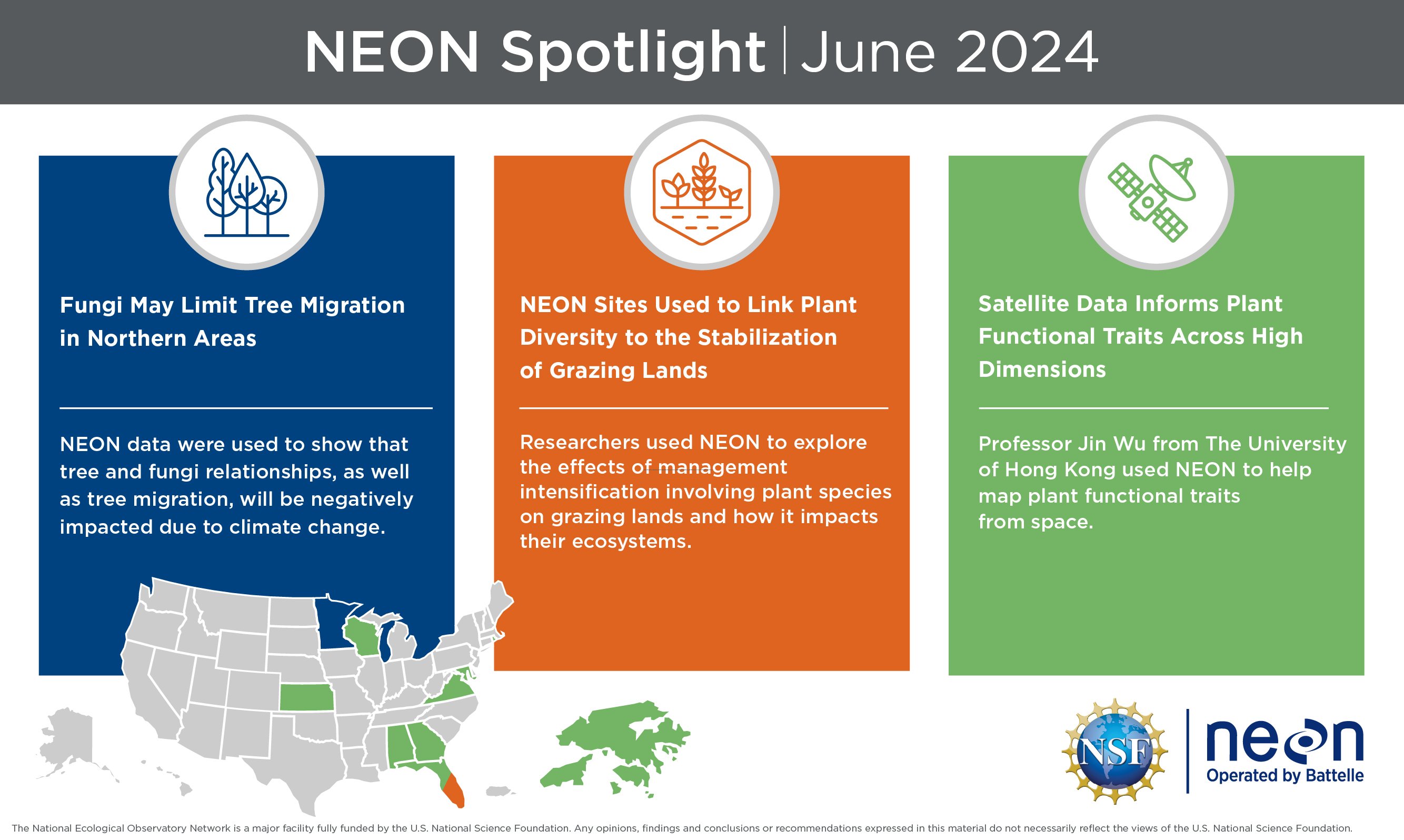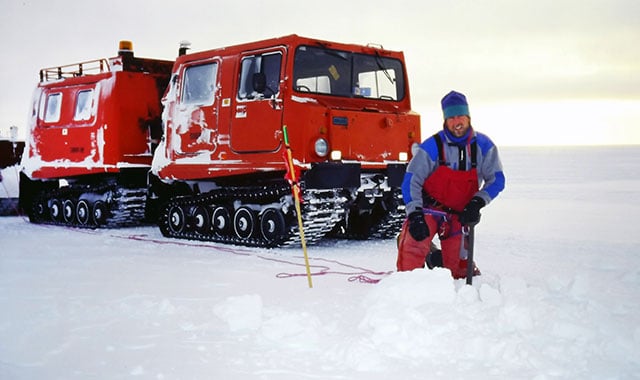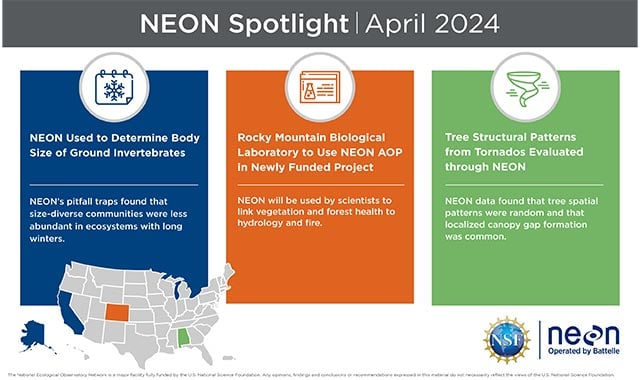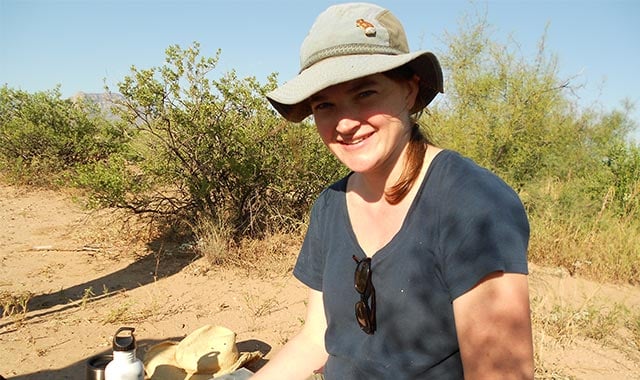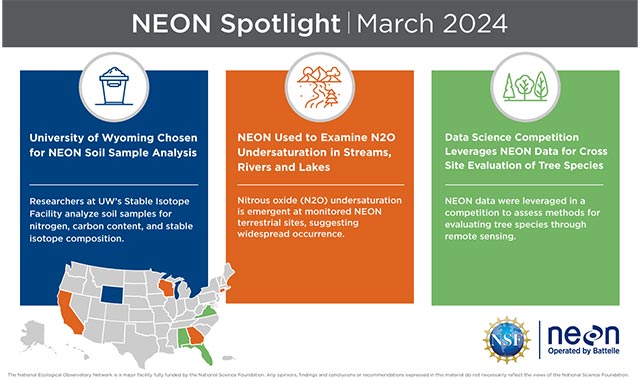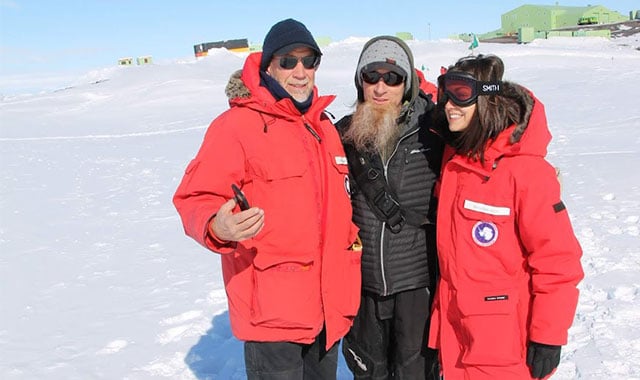April 2022: What’s New with NEON?
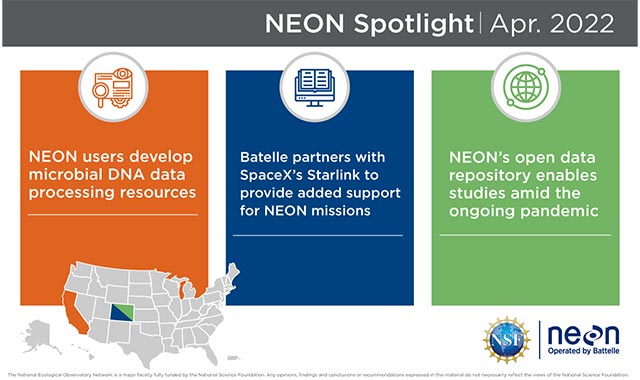
We’re featuring three ecological advances for April, including how Battelle is partnering with Starlink to help evolve NEON, the development of a new microbial data processing package to help process NEON data, and how NEON data enabled researchers and students to continue learning effectively amidst pandemic-related closures.
This Month’s Spotlight
The latest news from NEON includes:
- Battelle, manager of the National Science Foundation’s NEON program, is now testing a pilot program with Starlink to achieve improved data transmission and service as part of an ongoing initiative to leverage new and innovative technologies to evolve NEON operations. “The use of Starlink satellites for the NSF/NEON program demonstrates clearly how the new commercial space industry can benefit science and our understanding of climate and biodiversity changes,” said John Grunsfeld, former Astronaut and NASA Associate Administrator for Science. “The ability to reach remote areas nearly anywhere on planet Earth promises to enable new opportunities for science and exploration.”
- With a new neonMicrobeR package developed by Ph.D. candidate Clara Qin from UC Santa Cruz, researchers can now automate much of the work involved with downloading, processing, and assembling microbial data from NEON terrestrial field sites. Dr. Kai Zhu, an associate professor of Environmental Studies at UCSC, says, "NEON already provides data products for microbial community composition, but they are several steps downstream of where we usually begin analysis. There are a lot of reasons that researchers may want to use the raw sequencing data—for example, to be able to compare with other datasets using consistent taxonomic units or to make new taxonomic assignments. This package lets you make decisions around how you process the data based on your research objectives and what you want to compare."
- When field sites and laboratories faced potential pandemic-related closures, many researchers with ecological data science skills turned to NEON data to perform analyses and to prepare for future field seasons. At the same time, graduate students pivoted to modeling-based topics based on NEON data, while summer research programs for undergraduate students switched from field-based experiences focused on the collection of new data to computer-based analyses of existing NEON data. For example, the Harvard Forest Summer Research Program in Ecology ran virtually during the summer of 2021 with an emphasis on using NEON data and the Harvard Forest LTER site.
Sponsored by the National Science Foundation (NSF) and operated by Battelle, NEON is a continental-scale ecological observatory network dedicated to providing high-quality, consistently generated, standardized data that is free and available to all users. By enabling scientists, researchers, and students to address critical questions and understand ecosystem changes over time, the NEON program allows the ecological community to tackle questions and problems at a scale that was not possible before.
You can read about the latest work and research in the NEON Spotlight every month at Inside Battelle, and on our social media channels. For more information about NEON, visit NEONscience.org.
Related Blogs
BATTELLE UPDATES
Receive updates from Battelle for an all-access pass to the incredible work of Battelle researchers.
